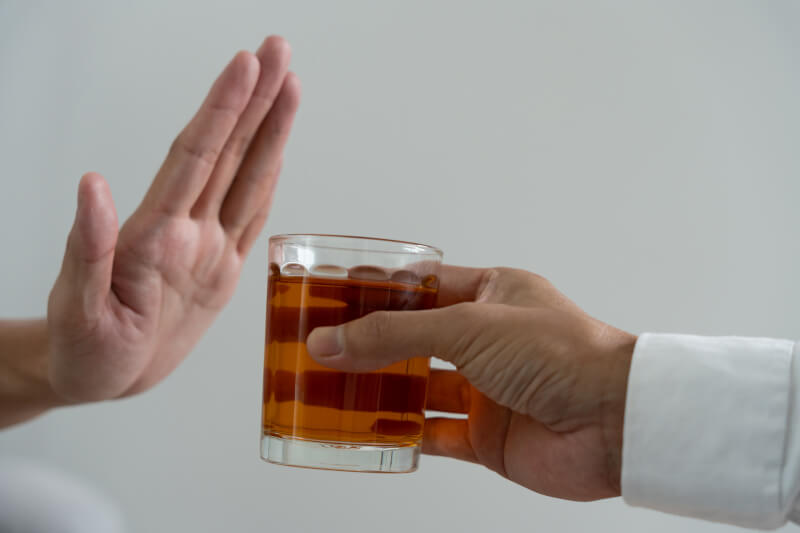Alcohol Prohibition Era
American society underwent a bold experiment known as Prohibition from 1920 to 1933. This constitutional prohibition on the manufacture, distribution, and sale of alcoholic beverages was driven by a confluence of moral, social, and political concerns, and it fundamentally altered American attitudes toward alcohol. Prohibition was implemented in the United States to reduce the perceived social problems connected with alcohol consumption. However, it had far-reaching implications, both planned and unexpected, that continue to have an impact on modern American culture.
What Happened to the Alcohol Market When Prohibition Began
The American alcohol business was dealt a devastating blow by the 18th Amendment and the Volstead Act, which made it possible to enforce Prohibition. Overnight, a growing black market necessitated the closure of distilleries and breweries or their transition to produce non-alcoholic commodities. During this time, many law-abiding Americans went dry or found innovative ways to break the law and continue drinking. In secret, “speakeasies” supplanted saloons, and “bootleggers” trafficked illegal alcohol, giving rise to the growth of organized crime. Changes that are still being felt today were set in motion by this alteration to the spirits industry’s landscape.
The Impact of the Repeal of Prohibition
Disillusionment and the realization that Prohibition had failed were defining features of the era’s last years. During the Great Depression, a consensus emerged for reform as a result of widespread unlawful activity, widespread contempt for the law, and the necessity for tax income. The manufacturing and sale of alcoholic beverages were legalized once more after the 21st Amendment was approved in 1933, thereby ending Prohibition.
However, the return to the way things were before Prohibition did not occur overnight after the restriction was lifted. The American brewing and distilling industries had to start over. Breweries, distilleries, and wineries that existed before Prohibition were either demolished or repurposed. The American public’s preferences had shifted, and valuable information and skills had been lost. There was a void in the market, and the black market and illicit distillation of spirits flourished. This raised issues of quality and safety.
The Legacy of Prohibition in Today’s Regulations
The legacy of Prohibition significantly shapes the liquor industry’s regulatory framework even today. The three-tier system that now exists in the United States between manufacturers, wholesalers, and retailers is a direct result of this. The system was put in place to prevent monopolies and curb the excessive drinking that was prevalent in the years leading up to Prohibition. On the other hand, it has been criticized for allegedly stifling competition and new ideas.
As another example, “Blue Laws” that prevent the sale of alcohol on Sundays in some states are a relic of the Prohibition era that reflects persistent negative attitudes towards alcohol. Because the 21st Amendment delegated much of the regulatory power to the states, liquor laws are all over the map.
The failure of Prohibition should serve as a wake-up call for better alcohol control measures. Consumption of “rotgut” spirits and deadly industrial alcohols during Prohibition demonstrated the dangers of unchecked and illicit manufacture to public health. Because of this understanding, we regulate the alcohol business in a way that prioritizes consumer protection without ignoring public health concerns about alcohol.
A Reaction to the Alcohol Standardisation Caused by Prohibition

Not only was legal alcohol production halted during Prohibition, but the variety and quality of alcoholic drinks also suffered greatly as a result. During this time, widespread alcohol manufacture was driven underground as large-scale breweries and distilleries were shut down. Because of this, bootleggers standardised producing cheap, low-quality spirits that could be distributed rapidly, leading to a standardization of the alcoholic beverage market. Thus, many regional and artisanal drinking customs were lost.
The craft movement was a backlash against mass production’s standardization of goods. After decades of decline caused by Prohibition, craft breweries and distilleries set out to restore the variety and quality of alcoholic beverages. They set out to make one-of-a-kind, artisanal drinks that paid homage to the culinary heritage of a certain region or even a single craftsperson. Craft manufacturers offer a diverse selection of one-of-a-kind, unique goods because they prioritise small-batch production, meticulous attention to detail, and the use of premium ingredients.
The Aftermath of Prohibition on Drinking in the United States
The effects of Prohibition on American drinking culture were significant and long-lasting. Due to alcohol illegally during this period, shady bars called “speakeasies’’ sprang up as a place for individuals to drink and socialize outside the law. There was more to speakeasies than just drinking alcohol which was illegal at the time. Many popular cocktails were developed as a means of disguising the harsh flavour of bootlegged liquor.
Additionally, December 5th, 1933 (today known as Repeal Day) commemorates the day Prohibition was finally repealed in the United States. It is a celebration of the repeal of Prohibition and of the right to consume alcoholic beverages in moderation.
The effects of Prohibition on American society are still being felt today. It sparked a wave of defiance, creativity, and an appreciation for variety and depth. American drinking culture has been profoundly altered by the Prohibition era, as seen by the lasting popularity of cocktails, the survival of speakeasies, and the commemoration of Repeal Day.
Cultural Examples of Prohibition
The time of Prohibition has become a cultural touchstone, inspiring works of art across genres and styles. This idealised representation of Prohibition has lasting effects on the public’s perception and the marketing of alcoholic beverages. These companies create an aura of elegance, revolt, and mystery by capitalising on the appeal and nostalgia of that chaotic era.
Templeton Rye is a famous whisky brand that fits this description. The brand embraces the heritage of Templeton, Iowa, which gained notoriety as a Prohibition-era bootlegging hub, by incorporating photos and stories from the past to convey a sense of authenticity and handiwork. This strategy helps people feel more connected to the business, while also recreating the excitement and mystery of the Prohibition era.
Old Forester bourbon is another popular example. Established in 1870, Old Forester is the only American bourbon distillery to keep running during Prohibition and its aftermath. Taking advantage of its heritage, the company’s logo and colour scheme is reminiscent of the Prohibition era, a nod to the era’s underground culture and the tenacity of those who kept the spirit alive.
These are only two of many examples of how the prohibition era is romanticised by the alcohol industry. These companies appeal to consumers’ sense of nostalgia and emotion by evoking the glamour of the “Roaring Twenties” and the rebellious spirit of that era. The ongoing impact of this pivotal period in American history is shown in the way that popular culture’s interest in Prohibition has influenced the marketing of alcoholic beverages.
Long-Term Consequences of the Alcohol Ban
Both the alcohol industry and American drinking culture were irrevocably altered during the Prohibition era. Its immediate effects included the closing of distilleries, the rise of criminal operations, and the creation of regulations still in use today. After Prohibition ended, a renaissance of artisanal alcohol production arose as producers sought to restore the variety and quality that had been lost during the prohibition era. The lasting interest in speakeasies, cocktail culture, and the annual celebration of Repeal Day are all remnants of Prohibition’s impact on American drinking culture.
The history of Prohibition can teach us a lot about the complexity of the alcohol industry, which will be useful as we move forward. Taking into account the results of previous regulatory choices allows us to strike a better balance between the need for regulation and the promotion of innovation and quality. The people who kept the industry’s spirit alive throughout Prohibition are an inspiration for their fortitude and ingenuity in the face of adversity.
Now that we understand the lasting effects of Prohibition, we can help define the spirits industry’s future in a way that respects its heritage while adapting to customers’ changing tastes. By acknowledging the lasting effects of Prohibition, we can move forward in a way that values creativity, diversity, and the ethical consumption of booze.
